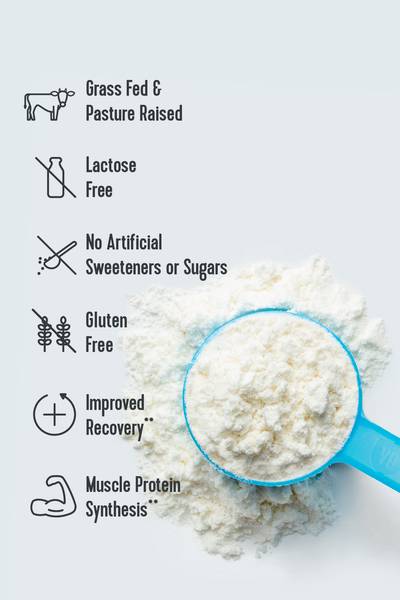To be a strong runner, you need to have strong legs. But running requires core and upper body strength, breath awareness and proper running form, too. And because of this, there’s a lot of room for error. One muscle imbalance or pushing through pain for an extra mile can spell injury, and it’s harder than you'd think to be careful. Not to mention, if your gait or stride isn’tjust right, you could quickly be sidelined.
Having proper running form is essential for any runner’s health and longevity. It can play into both injury prevention and performance. Unfortunately, it can be difficult to know if you have good or bad running form without a coach or some serious self-analysis.
On the bright side, though, there are some signs and indications of poor running form — ones you can look out for and address to become a better, healthier runner.
Vital Note: This article has been made available for informational and educational purposes only. It is not intended to be a substitute for professional medical advice, diagnosis, or treatment. Always seek the advice of your physician or another qualified health provider with any questions you may have regarding a medical condition. Your licensed healthcare professional can best provide you with the diagnosis and treatment of any medical condition and assist you as well in deciding whether a dietary supplement will be a helpful addition to your regimen.

How Do I Know If My Running Form Is Correct?
A surprise to no one — when something hurts, something's wrong. Too often, runners ignore aches and discomfort, and then wonder why they're sidelined with injury for weeks or months later down the road. All throughout college, I had pain in my lower calves whenever I'd run, and it wasn't until I analyzed my running form that I realized it was bad. Once I did some research and fine-tuned my stride (which, for me, involved switching from a heel strike to a mid-foot strike), the pain disappeared.
Numerous runners suffer knee, hip, foot and even upper body discomfort when they run, and are quick to write it off as a growing pain — something that comes with training. While you don't have to jump at every twinge or overthink your soreness, pain often indicates that something, somewhere in your body is off, and it should prompt you to take another look at how you’re running. For me, if the pain doesn’t subside after one or two runs (and after continuous icing and resting), I'm taking a step back and seeking guidance — from a coach, a book, YouTube videos, wherever — to figure out what's wrong.
If you're getting unilateral injuries (hurt on just one side) on a regular basis, it may be an indication something is off with your form,Joe McConkey, a Boston-based exercise physiologist and USATF-certified running coach, tells Lively. You can also look at your shoe wear pattern, if the tread is wearing unevenly, it can also be a sign that something is off.
Related Articles
How Do I Fix My Running Form?
This isn't a telltale, sure-fire indicator, but if your posture is bad, there's a decent chance that your running form is, too. Posture reflects our body’s alignment, and when our alignment is off, we tend to develop muscular imbalances that can alter our running form.
To ensure symmetry of pliability, McConkey suggests focusing on self-massage with a foam roller. It could also indicate that something is off in another part of your body, for example your lower back or one glute, so adding strength training into your routine can help improve your running form as well.
Improper posture can be difficult to correct, so if you experience chronic pain in your back (upper or lower), shoulders or hips, consider contacting a physical therapist, taking up yoga and making time to stretch and strengthen your postural muscles. Once your body is balanced and moving as intended, you’ll be able to correct your running form.

What Is The Proper Running Form?
To help reset your posture, McConkey suggests taking a long, deep inhale, which will make your chest and shoulders tall. Then, return to normal breathing, keeping chest up and ensuring your shoulders don't hunch.
"This will reset your posture, lengthen your spine and put your body in a more stable, strong position to absorb force," McConkey says.
Depending on your running form, you can try doing this once every mile or so to check in, and eventually you may need to do this only at the start of a run.
You also may be clenching your fists too tightly. McConkey suggests pretending like you're running with and egg in your hands (fists tight but not too tight), and cradling a walnut in elbow to keep arm motion symmetrical.
"There certainly is no ideal single running form that all runners should work toward, but there are likely some improvements that everyone can make. A safe place to start with this is paying attention to your general posture, standing and walking, then apply these lessons-learned to your running," McConkey says.
Can proper running form affect my speed?
"From a performance standpoint, if you don't have a certain range of speeds or if your paces are fairly close no matter the distance, there’s probably some biomechanical things going on, such as a lack of range of motion," McConkey says.
Nothing is more frustrating than working hard and seeing no progress. For many runners, that’s why they train. Progress takes effort and patience, but you should be progressing in some way when you’re consistently training.
If you feel that's not the case, you have to look at your training program, your adherence to it, and your running form. First, is your training plan realistic? Are you trying to go from two to 10 miles in a week? Also ask yourself, how much are you actually running? We all go into training programs and new habit development with the best of intentions, but we underestimate how challenging self-accountability can be (when we’re so used to external validation). Whether or not you progress in speed or distance depends on your commitment level to training — when you practice, you get better; when you don't, you won’t.
In the event that your plan is both realistic and attainable for you, you're sticking to it, but you still aren't running faster, farther, or with any more ease — well, it's time to review your running form. Oftentimes adjusting your gait, head, arm swing, or opening your stride can unlock underlying speed and conserve your energy. The best way to diagnose the issue is to consult a running specialist or coach (which you can usually find at a running store, indoor running studio, or online), a sports physical therapist, or a sports medicine doctor. Once you know what's going on, you can recalibrate and move forward in no time.















